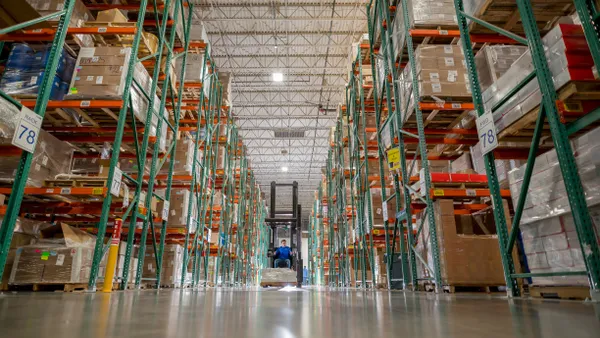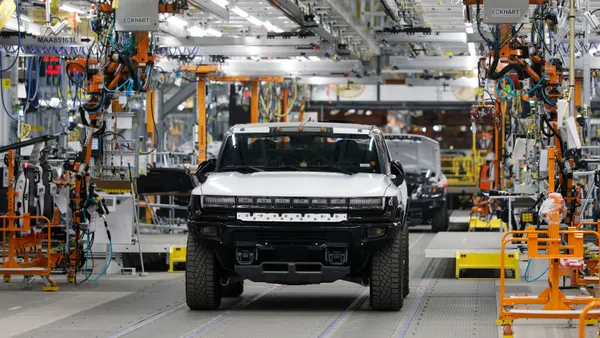Dive Brief:
- The intelligent factory will completely overhaul manufacturing operations, according to a new Intel survey of 145 workers.
- However, the path to transformation is littered with challenges, like resource constraints, skill shortages and insufficient training. A successful journey will require a "coevolution" of workers alongside manufacturing operations.
- If companies today focus their efforts on addressing labor pain points, engaging their workers in the change process and bridging an understanding, skills and trust gap, the intelligent factory may be fewer than five years away, Intel said.
Dive Insight:
The Fourth Industrial Revolution is in full swing, and the rise of the Internet of Things (IoT) is one of the main agents.
Industrial IoT is changing not just the way companies store and analyze data, but also how workers engage with machines. Using IoT, ordinary equipment can communicate directly with systems, reaching a level of autonomy previously unknown. Workers, meanwhile, can be freed from the "pain points" they identified in the Intel survey to perform higher-impact labor tasks.
As an industrial technology manufacturer, Intel has an interest in pushing the survey results that suggest IoT may help both speed up the Fourth Industrial Revolution and improve factory operations. Nonetheless, the survey presents clear lessons for operations managers thinking about how to best manage technology implementations.
"With sensors and analytics, operators can better understand the leap (sic) up to events that might otherwise cause unanticipated failure," Irene Petrick, director of industrial innovation at Intel's Internet of Things Group, told Supply Chain Dive. "Once operators can see into the machine status, this can be linked to system-level, inter-machine activities."
Unplanned downtime is a major issue in factories, and system-level optimization is important to increasing yields and quality.

Irene Petrick
Director of Industrial Innovation, Internet of Things Group, Intel
IoT, in other words, helps factories eliminate data silos and embrace a system-of-systems approach. For supply chain, Petrick says, this is "critical to eliminate point solutions that add value at a single area, but that do not optimize system-level performance."
Workers, however, remain a key element to reducing these bottlenecks and pain points. In fact, they expect to be able to offer suggestions on how to fix operating problems, and how technology is working to do this. As a result, the report finds it is all the more important to help workers evolve alongside new technology.
"It is likely that there will be unbalanced progress (between the workforce and technology) at any point in time," Petrick said. "This will happen, in part, because workers may not be able to express exactly what they need or want, or because technology is moving faster than the process into which it must be situated."














